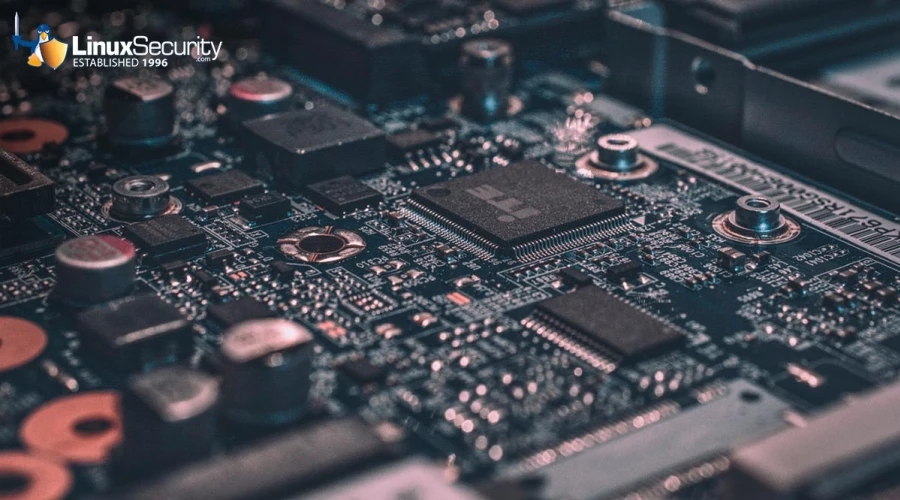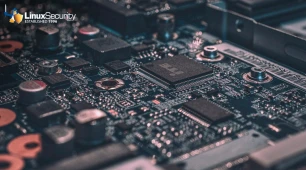
The third installment of Arm's Linux kernel patches integrates support for Morello, an experimental extension of Arm architecture infused with capability-based security features from CHERI. What does this mean for us admins? Morello allows us to experiment with advanced memory protection techniques to prevent buffer overflowsbuffer overflows directly at the hardware level.
Currently, patches focus on DeviceTree support for the Arm Morello System Development Platform. Although not yet ready for production use, these updates show what can be accomplished when combining ARM and CHERI's strengths into an effective security architecture. Therefore, we must monitor these developments closely and conduct controlled tests of the Morello platform. As this project evolves, capability-based controls could provide substantial security benefits. Let's have a closer look at how these patch updates could improve the security of Morello and how adopting the Morello architecture could enhance the security posture of your Linux systems.
What Is Morello?
 Morello is an ambitious project developed through collaboration between Arm and the UK government that aims to create a more secure computing environment by addressing some of the fundamental flaws found in traditional architectures. At its core, Morello extends Armv8.2-A with principles from CHERI (Capability Hardware Enhanced RISC Instructions), an initiative intended to increase processor security through fine-grained memory protection and capability-based security controls.
Morello is an ambitious project developed through collaboration between Arm and the UK government that aims to create a more secure computing environment by addressing some of the fundamental flaws found in traditional architectures. At its core, Morello extends Armv8.2-A with principles from CHERI (Capability Hardware Enhanced RISC Instructions), an initiative intended to increase processor security through fine-grained memory protection and capability-based security controls.
Morello stands out as an innovator by employing capability-based security, which means relying on tokens specifying permissions rather than traditional address-based memory protection for more precise memory access control - helping prevent vulnerabilities like buffer overflows and use-after-free errors from occurring at an early stage in software development. Morello aims to lay down a foundation for significantly more secure software by addressing such vulnerabilities directly at the hardware level.
DeviceTree Support and Its Importance
Recent Linux kernel patches for Morello have focused on adding DeviceTree support for the Arm Morello System Development Platform. DeviceTree is a data structure describing hardware that allows an operating system to better comprehend its workings. Specifically with Morello, it helps the kernel interact with its unique capabilities more efficiently.
Through DeviceTree support, these patches allow developers and security admins to begin experimenting with Morello even before it is ready for production use. Experimentation is essential in understanding how the Morello architecture can be leveraged to increase security and identify any issues or limitations. This experimentation process opens up further development and eventual adoption in more widespread scenarios.
The Road Ahead: Potential Benefits and Considerations
Adopting Morello can bring many potential advantages. Chief among them is improved memory safety. While traditional mechanisms are often too coarse-grained, leaving systems vulnerable to various  attacks, Morello's capability-based approach provides much tighter controls that can potentially eliminate entire classes of vulnerabilities that are challenging to address with existing technologies.
attacks, Morello's capability-based approach provides much tighter controls that can potentially eliminate entire classes of vulnerabilities that are challenging to address with existing technologies.
Integrating Morello into Linux systems could provide a stronger foundation for security-critical applications, including financial services, healthcare, and critical infrastructure environments where security is paramount. Morello could also reduce memory-related vulnerabilities that threaten data integrity and privacy.
As this technology is still in its experimental stage, bugs and issues may need to be worked out. Furthermore, as Morello represents such a departure from traditional architectures, there will likely be a learning curve for developers and security admins alike. Investing the time to understand capability-based security implemented within Morello will allow you to maximize its full potential.
Preparing for Implementation: Testing and Learning
Due to the experimental nature of current patches, it is advisable to begin testing Morello in a non-production environment before moving it into production. Set up a sandbox or test lab where you can safely explore Morello's features while gauging their impact on the security and performance of your system. Pay close attention to updates provided by Arm and the CHERI project to stay abreast of the latest developments or any known issues.
As soon as testing begins, focus on understanding how Morello's capability-based security model functions in practice. This means understanding the concept of capabilities, their assignment/enforcement within your system, and any new tooling or modifications to existing tools required to support Morello-enabled systems.
Engaging with the larger Morello community of developers and security professionals is also worthwhile. Online forums, mailing lists, and conferences provide invaluable opportunities for sharing experiences, troubleshooting issues, learning from others' insights, and speeding up learning as newer versions become available. By developing relationships with others exploring Morello, you can accelerate your learning experience while staying up-to-date on best practices as the technology matures.
Looking to the Future
 Morello's development could significantly shift how we approach system security. With its emphasis on hardware-enforced capabilities, Morello may inspire new standards and practices across industries and lead to more secure computing environments - both opportunities and challenges for Linux security admins. Staying ahead with Morello requires an ongoing commitment to learning and adaptation, but the benefits could well outweigh the investment.
Morello's development could significantly shift how we approach system security. With its emphasis on hardware-enforced capabilities, Morello may inspire new standards and practices across industries and lead to more secure computing environments - both opportunities and challenges for Linux security admins. Staying ahead with Morello requires an ongoing commitment to learning and adaptation, but the benefits could well outweigh the investment.
In the short term, monitoring the progress of Morello-related patches and updates within the Linux kernel is essential. Participate in tests and provide feedback so developers can address issues while improving the platform. By being active and engaged - you can help shape Morello's future!
Our Final Thoughts on Recent Arm Morello Linux Kernel Patches
Arm's recent Linux kernel patches integrate support for Morello, giving us an early glimpse of a future where hardware-enforced capability-based security can strengthen our defenses against common vulnerabilities. Though still experimental, Morello's promise of improving memory safety and offering greater system security makes it worth watching. Linux security admins now have an opportunity to stay ahead of the curve, experiment with cutting-edge technologies, and prepare for a future where advanced security models like Morello may become standard practice. As cybersecurity progresses, staying aware and informed about innovations like Morello will help maintain robust protection in your systems.

















